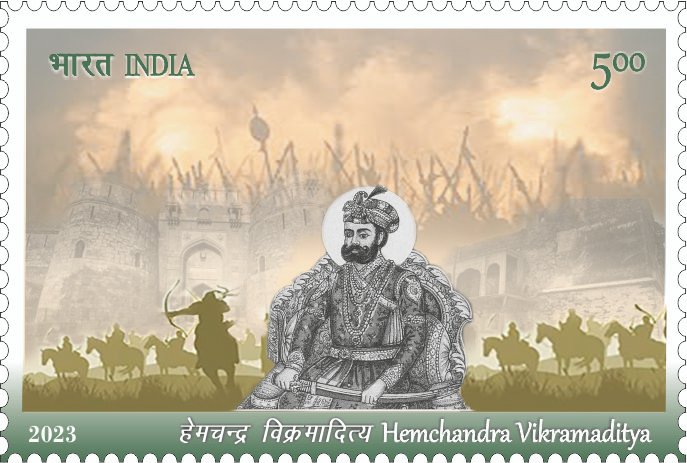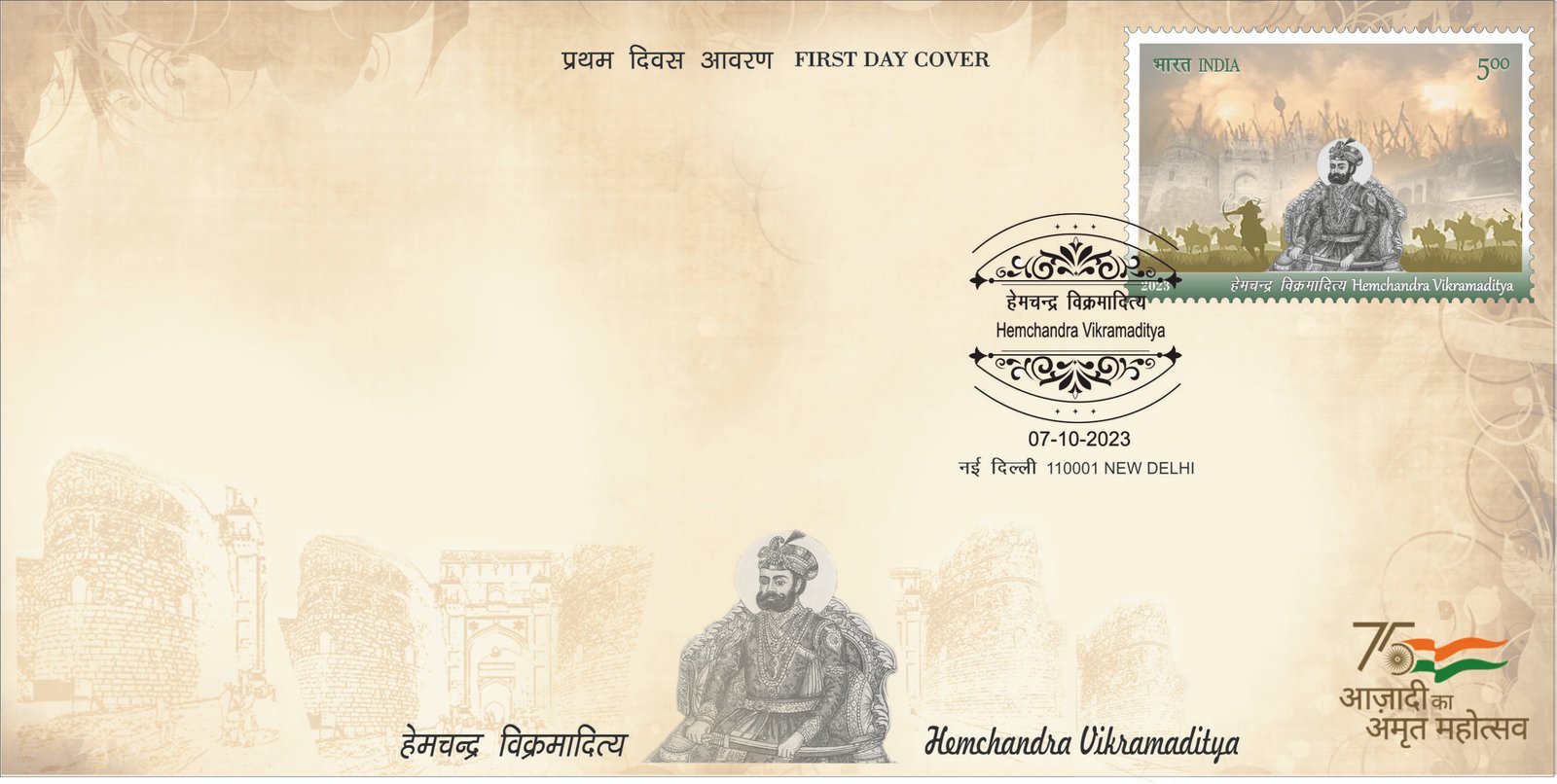Samrat Hemchandra Vikramaditya

Technical Data
| Date of Issue | October 7, 2023 |
|---|---|
| Denomination | Rs. 5 |
| Quantity | 201,600 |
| Perforation | 13½ |
| Printer | Security Printing Press, Hyderabad |
| Printing Process | Wet Offset |
| Watermark | No Watermark |
| Colors | Multicolor |
| Credit (Designed By) | Ms. Neetu Arora |
| Catalog Codes |
Yvert et Tellier IN 3594 Colnect codes IN 2023.10.08-01 Michel IN 3937 Stanley Gibbons IN 3865 |
| Themes | Commemoration | Famous people | Horses | Military Officers |
Early Life and Background
Samrat Hemchandra Vikramaditya, popularly known as Hemu, was the last Hindu emperor of India. Born in 1501 in Machheri village near Rajgarh (Alwar, Rajasthan), in a Dhusar Brahmin (Bhargava) family, Hemu rose from humble origins to become a remarkable statesman, administrator, and military genius. His father, Puran Das, later embraced sainthood and moved to Vrindavan, while the family shifted to Rewari (Haryana). Growing up, Hemu was educated in Hindi, Sanskrit, Persian, and Arabic and developed a fondness for wrestling and horse-riding.
Rise in Administration
Beginning as a supplier of cereals and saltpeter to Sher Shah Suri’s army, Hemu soon came into prominence. Recognizing his talent, Islam Shah Suri appointed him as personal advisor and later promoted him to Chief of Intelligence. Hemu’s administrative acumen and military ability earned him key positions including Governor of Punjab and Delhi. Under Adil Shah Suri, Hemu rose to become Prime Minister and Chief of the Afghan Army, entrusted with quelling revolts across northern India.
A Military Genius
Hemu proved his unmatched strategic brilliance by winning 22 consecutive battles against Afghan rivals and regional claimants. He defeated powerful opponents, occupied Delhi, and on October 6, 1556, triumphantly entered the city after defeating the Mughal army at Tughlaqabad. His coronation at Purana Qila marked the restoration of Hindu rule after centuries, and he assumed the historic title Vikramaditya.
Visionary Reforms
As emperor, Hemu introduced significant reforms in administration, commerce, and military organization. He dismissed corrupt officials, protected merchants, reorganized the army, and enforced a ban on cow slaughter. His rule, though brief, reflected his vision of a just, strong, and self-reliant Bharat.
The Battle of Panipat and Legacy
Hemu’s reign lasted only 29 days. On November 5, 1556, he faced Akbar’s forces in the Second Battle of Panipat. Struck by an arrow, Hemu was captured unconscious. Despite Bairam Khan’s insistence, Akbar refused to strike him down personally, but Hemu was executed, and his followers massacred. His clan faced brutal persecution, marking a tragic end to his valiant struggle.
Enduring Significance
Historians, including R.C. Majumdar, have described Hemu’s rise as “a unique episode in the history of India during the Muslim rule.” His coronation symbolized the resurgence of native rule and his bravery continues to inspire generations.
Commemorative Stamp
In honour of his extraordinary courage, leadership, and contribution to India’s history, the Department of Posts proudly issues a Commemorative Postage Stamp on Samrat Hemchandra Vikramaditya, an epitome of valour and national pride.
First Day Cover

